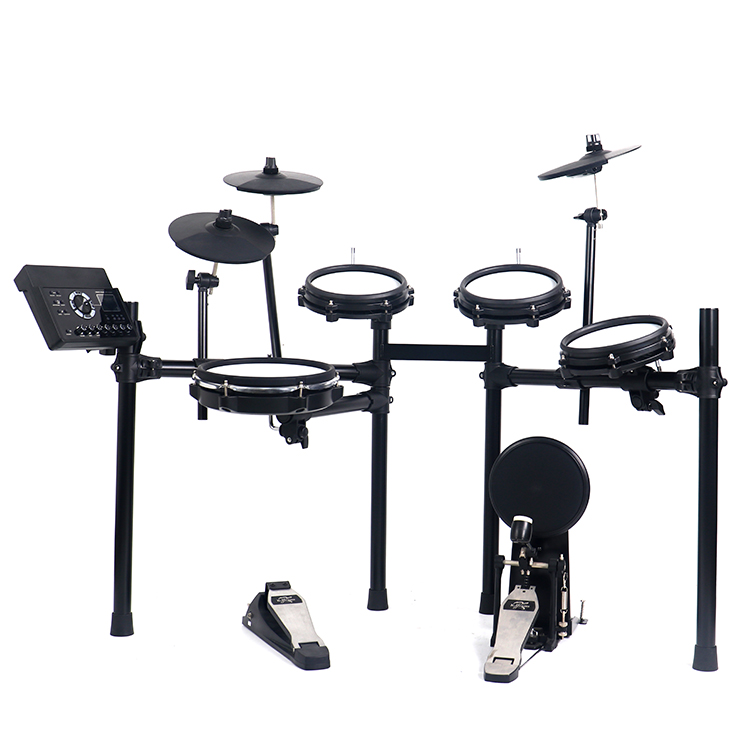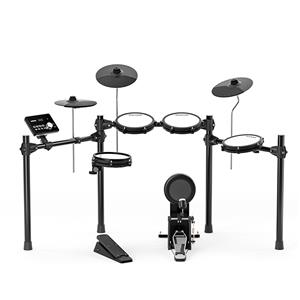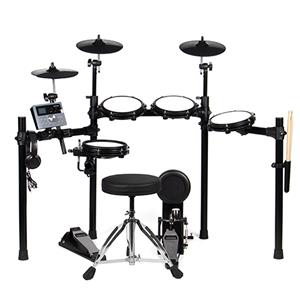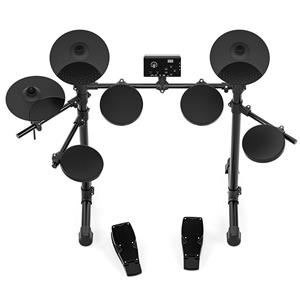- Home
- >
- Blog
- >
- Product news
- >
- What features should an electronic drum set?
What features should an electronic drum set?
When choosing an electronic drum set, there are several features you should consider to ensure it meets your needs and preferences. Here are some key features to look for:
1. Drum Module: The drum module is the central component of an electronic drum set, responsible for generating sounds and providing control options. Look for a module that offers a wide range of high-quality sounds, customizable parameters, intuitive user interface, and easy navigation.
2. Pads and Cymbals: Pay attention to the quality and responsiveness of the pads and cymbals. Look for pads that provide a realistic feel and response, with adjustable sensitivity and dynamic range. Consider the number and types of pads and cymbals included in the set, such as snare, toms, hi-hat, crash, and ride cymbals.
3. Connectivity Options: Check for connectivity features that allow you to expand the functionality of the electronic drum set. Look for MIDI or USB ports that enable you to connect to a computer, recording equipment, or trigger external sound modules or virtual instruments. Auxiliary inputs are also useful for connecting external devices like smartphones or music players.
4. Expansion Capability: Consider whether the electronic drum set allows for expansion. As your skills progress, you may want to add more pads, cymbals, or additional accessories to enhance your playing experience. Ensure that the drum set supports expansion options and is compatible with additional components from the same manufacturer or third-party providers.
5. Playability and Adjustability: Look for features that allow you to customize the playability of the drum set. Adjustable pad sensitivity, cymbal choke functionality, and the ability to change the drum head tension can enhance the playing experience and accommodate your playing style.
6. Built-in Sounds and Effects: Consider the variety and quality of built-in sounds and effects available in the drum module. Look for a diverse range of drum kits, percussion instruments, and sound effects that cover various musical genres. Some drum modules also offer editing capabilities to create custom sounds and effects.
7. Practice and Learning Tools: Check if the electronic drum set includes practice features such as metronomes, play-along tracks, and coaching functions. These tools can assist in developing timing, rhythm, and overall drumming skills. Some drum sets may even have built-in tutorial content or the ability to connect to educational resources.
8. Portability and Compact Design: If portability is a priority, consider the size, weight, and ease of setup of the electronic drum set. Look for models that are compact, lightweight, and easy to disassemble and transport. This is particularly important if you plan to perform gigs or have limited space in your practice area.
9. Build Quality and Durability: Consider the overall build quality and durability of the electronic drum set. Look for sturdy construction, reliable components, and reputable brands known for producing reliable and long-lasting products.
10. Price and Value: Set a budget range and consider the overall value for money. Compare the features, quality, and reputation of different electronic drum sets within your budget to find the best balance between cost and performance.

Remember to consider your own skill level, musical style, and specific requirements when evaluating the features of an electronic drum set. It's also helpful to read reviews, seek recommendations, and try out different models if possible to ensure the drum set meets your expectations.




